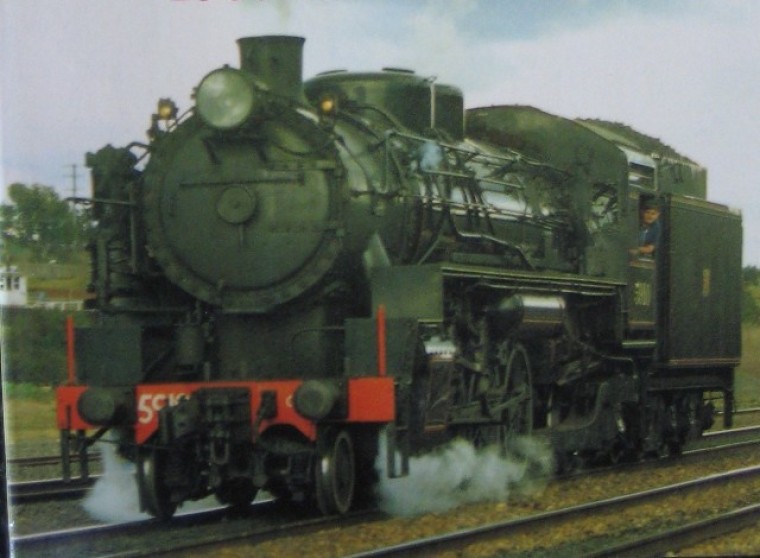

On every steam and diesel locomotive a sand pipe runs from a sand box high up in the frame work of the locomotive to the pipe's opening minimally in front of the driving wheels.
The locomotive driver has a floor pedal (button) for his leg to push upon which releases the sand down the sand pipe and to the rail head which acts as an agent to grit the driving wheels of the locomotive to the rail.
When wet, the rail line becomes very slippery and locomotive driving wheels under such conditions slip and slip badly. The sound of a slipping driving wheel on a locomotive is high pitched and is a sure tell tale sound to the locomotive crew.
To counter such slipping the driver applies pressure to the sand button on the floor and the sand is released from the sand box and down the pipe to the rail head. As if by magic, the locomotive's wheels stop whining, grit and grab the rail head and the problem of slipping gets solved.

I can recall one time when as an acting fireman in my training period of two weeks out on the main line, the driver and I were assigned to a 42 Class diesel locomotive to run a freighter from Goulburn to Queanbeyan and Canberra. We signed on duty at 11.05pm and collected the 42 Class from the Goulburn Round House (which is now a rail museum) and made our way to South Yard where we were connected to the train.
It was damp foggy night and unbeknown to me, due to my lack of experience as a young bloke, it was going to be a tough trip as the rail lines were damp from the heavy fog. We got going and by the time we got to Lake Bathurst, the driver invited me to gather some experience to take the wheel (as it were).
It was pretty well level running from Goulburn to Lake Bathurst where the passenger trains ran at 60 mph (100 Ks) and freighters got along at 40 mph (70 ks). But once past Lake Bathurst it become hilly all the way to Bungendore.
Once past Lake Bathurst where I needed to power up the 42 Class to full throttle, and on the damp line, it was not long before I heard the high pitched whine of the locomotive's wheels on the rail head, and it was at that time I realised why the wise old driver offered me the driving position.
The maintenance staff at the depot had not attended to the stiff sand pipe pedal (button) and I needed to put very heavy pressure on that pedal (button) to get the sand released from the sand box down the sand pipe and on to the rail head. It was a tough night and I had a sore leg for some time after it.

Centipedes
In the Footplate Padre's 16 railway books on train driver's anecdotes are several stories from train drivers when they found they needed to apply the sand to the rail head to prevent slipping and all were not related to damp, foggy or wet weather.
Two were related specifically to the Tumut line from Gundagai(the dog sat on the tucker box fame). One story was in association with a passenger rail motor and the other a steam engine.
Rail motors also functioned with sand boxes with a sand pipe to the rail head and on both occasions, it was a rare form of centipede that was the cause of the slipping issue. What was difficult was that when the centipedes were squashed the line became like an oily mass on the rail head and every driving wheel of the rail motor simply had no traction. Every wheel slipped to a stand still.
The same story applied to the steam engine. Fortunately this did not happen as an every summer occurrence, but when this freak of nature did happenstance it was a nightmare for all involved. There were times when the engine had to remain at a stand still until the line was cleared of the centipede troop.
All this reminds the Footplate Padre of how unexpected things happen in life, many none-to-pleasant and how to not only make some kind of sense of it, but to move forward in the most difficult and traumatic circumstances.
In my 37 years of Christian ministry it has befallen me like my fellow ministers, to meet people at their deepest need when such situations befall someone – everything from bereavement, accident, loss of employment, hopelessness, anxiety and stress, cancer, illness, children and youth and a thousand others.
Recently one of our international young writers had a totally unexpected industrial accident. He has lost the sight of his left eye. We ourselves have seen our eldest daughter (married with 2 little ones) go through the whilrwind of breast cancer, a first operation, then chemo and then a second operation. We could have lost her.
The nature of pastoral care is the bread and butter of Christian ministry. I recall when Ted Dexter bought out the MCC in 1991 and in my role as the Australian cricket team chaplain, Ted told that but for pastoral matters three of his best cricketers were unable to tour. Pastoral ministry is like that sand on the rail head, helps us in the wheels of life to get a better grip to move forward.

Dr Mark Tronson is a Baptist minister (retired) who served as the Australian cricket team chaplain for 17 years (2000 ret) and established Life After Cricket in 2001. He was recognised by the Olympic Ministry Medal in 2009 presented by Carl Lewis Olympian of the Century. He mentors young writers and has written 24 books, and enjoys writing. He is married to Delma, with four adult children and grand-children.
Mark Tronson's archive of articles can be viewed at http://www.pressserviceinternational.org/mark-tronson.html